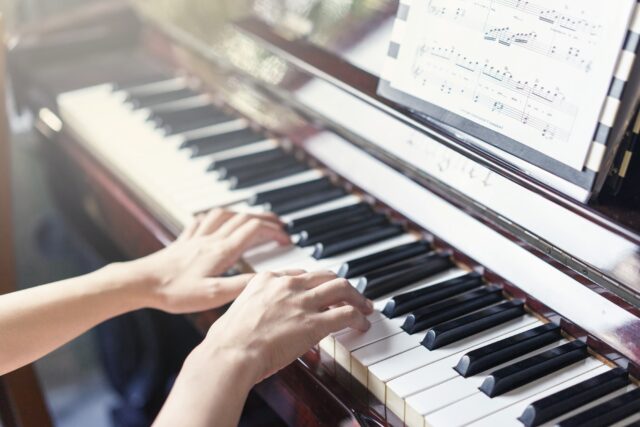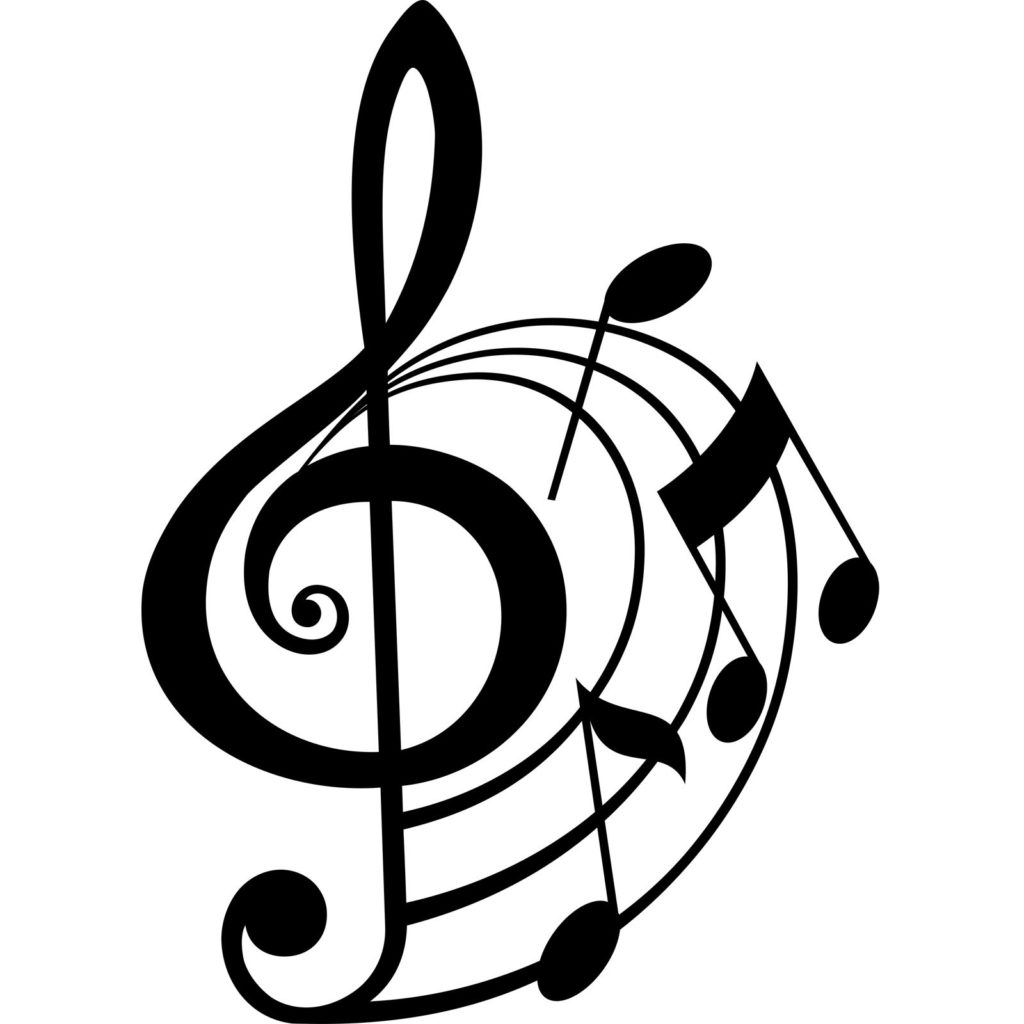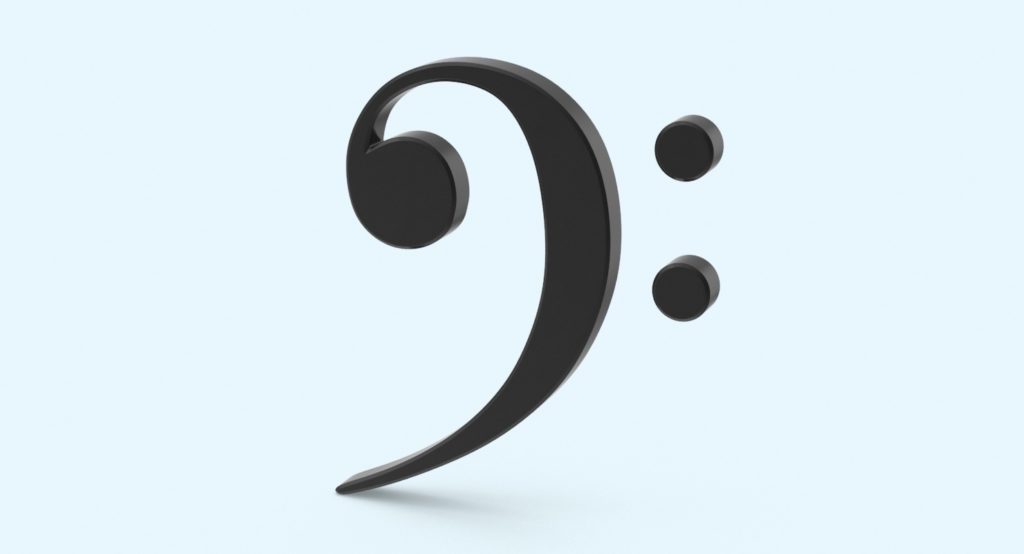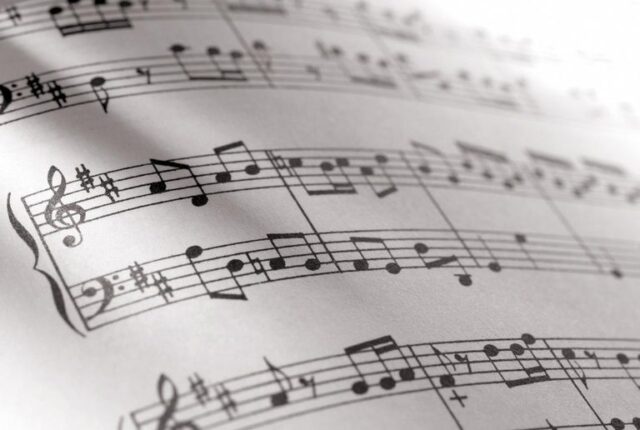
If you want to learn to play the piano, you must learn to read the notes for piano music. In order to do that you need to go through the basics, so you can understand what the notes say, but also to be able to look at them and play easily. Of course, it requires some practice, but once you learn the basics, the rest comes easier.
The staff and the treble clef

The term staff is also known as the stave, which is comprised of five lines and four spaces for writing various musical pitches. It serves for placing music symbols according to their function to create one meaningful melody. The symbol of the clef is placed to indicate the pitch of every line. Treble clef or G clef is put on the second line making a middle C pitch. Remember, the lines and spaces are looked at and numbered from the bottom ones to the top ones making the bottom line the first one. These lines and spaces are named after the alphabet letters: A, B, C,D, E, F and G.
The Bass Clef, Ledger Lines and the Grand Staff

This is the next step you must learn. Bass clef is also known as F clef, which is the fourth line. It got its name because of the two dots on both sides of the F line. The lines on this clef go like this G-B-D-F-A and the easiest way to remember is to choose some sentence that will be an easy association, such as – Great boys don’t fight always. Leger lines are the lines above and below the staff. The grand staff gets formed by mixing the treble and the bass clef, and a leger line.
Make it simple

Even though all these things can be pretty confusing, it is important to remember that the notes are played with two hands and 10 fingers. Considering that the piano music usually has two staves, the upper stave is written for playing with the right hand, while the bottom one shows the notes that should be played with a left hand. This is much clearer now, right? Yes, well you can start by practicing with one hand at first until you remember how everything goes and then try it with both hands when you feel you’re ready.
The notes

The notes you can see on the staff show which letter should be played and for how long. It is important to remember there are 3 parts of every note: head, stem and the flag. The head is the main indicator that shows the note and its duration. The stem is a line that goes from the head of the note, either up or down. It goes from the right if it points upward, or from the left when pointing downward. This direction does not affect the way of playing the notes, but it has a rather practical purpose to enable the notes to fit in nicely on the staff. The rule is to have stems pointing downwards at the B line or above it, while the notes below it have stems pointing upward. The flag is a mark placed right of the note stem. The whole purpose of the flag is that it indicates the duration of the note. The value of the note is indicated by whether the head of the note is filled or open.
A dot placed next to the head of the note extends the length of the note in question, it adds half of the usual duration of that note. A tie is also used to extend the duration of a note, so the two notes get held until the value of both notes is finished. The duration of the notes can be also shortened, which can be indicated by flags or beams between the notes. Flags shorten the duration of the note in half, while a double flag takes the value of the note to one quarter. The purpose of the beams is the same, but it enable us to read the notes clearly and it causes less clutter.
Three stages of learning

Even though learning to play the piano and read piano notes may be pretty challenging, if you break it down into three steps, than it will be much easier:
– introduction
– exercise
– playing
Well, this makes it much simpler. The introduction should consist of lessons, in writing and video content of high-quality that you can easily understand. Make sure you do your research and find out everything that you don’t understand, learn, ask questions and keep an open mind – no one learned to play an instrument instantly. It is a process, it takes time, and you should embrace the learning curve, and be ready for setbacks.
The next step is to buy piano from reputed pianos shops and exercise. The exercise means that you will need to have various worksheets that will enable you to use your knowledge and make sure it is rock solid. This is the only way you will be able to progress and achieve your goal of learning to play the piano in the shortest period possible. The final stage it is to play. Of course, you will be less skillful at first, and that is all right. It is the normal process and it should be perceived as the first step in your journey of learning to play the piano.
As you can see, the process is demanding, but it is not impossible to learn to play. If all this sounds too confusing, then you may use some help. Take a look at Skoove for interactive piano lessons. If you want to find out more and get the help you need in your quest to overcome all the difficulties that stand on your way of mastering the skill of playing the piano. The first steps of learning to read the piano music may be difficult at first, but with the right support and enthusiasm, you will learn to play in no time!












